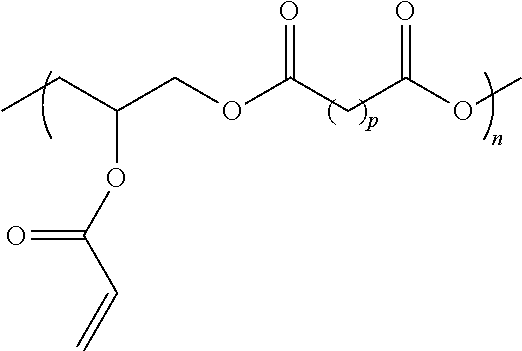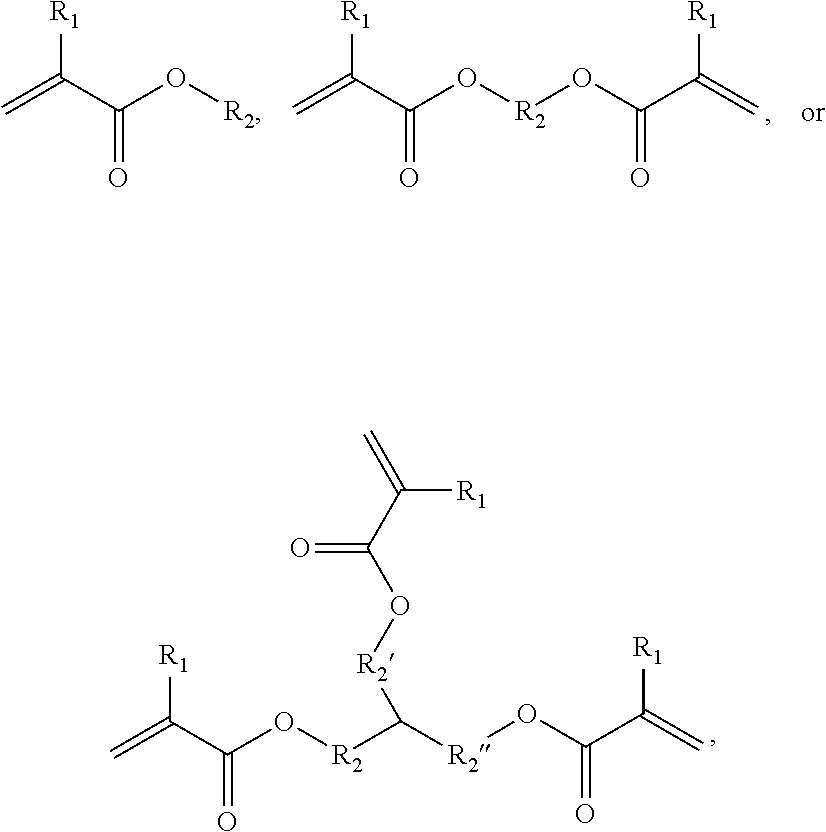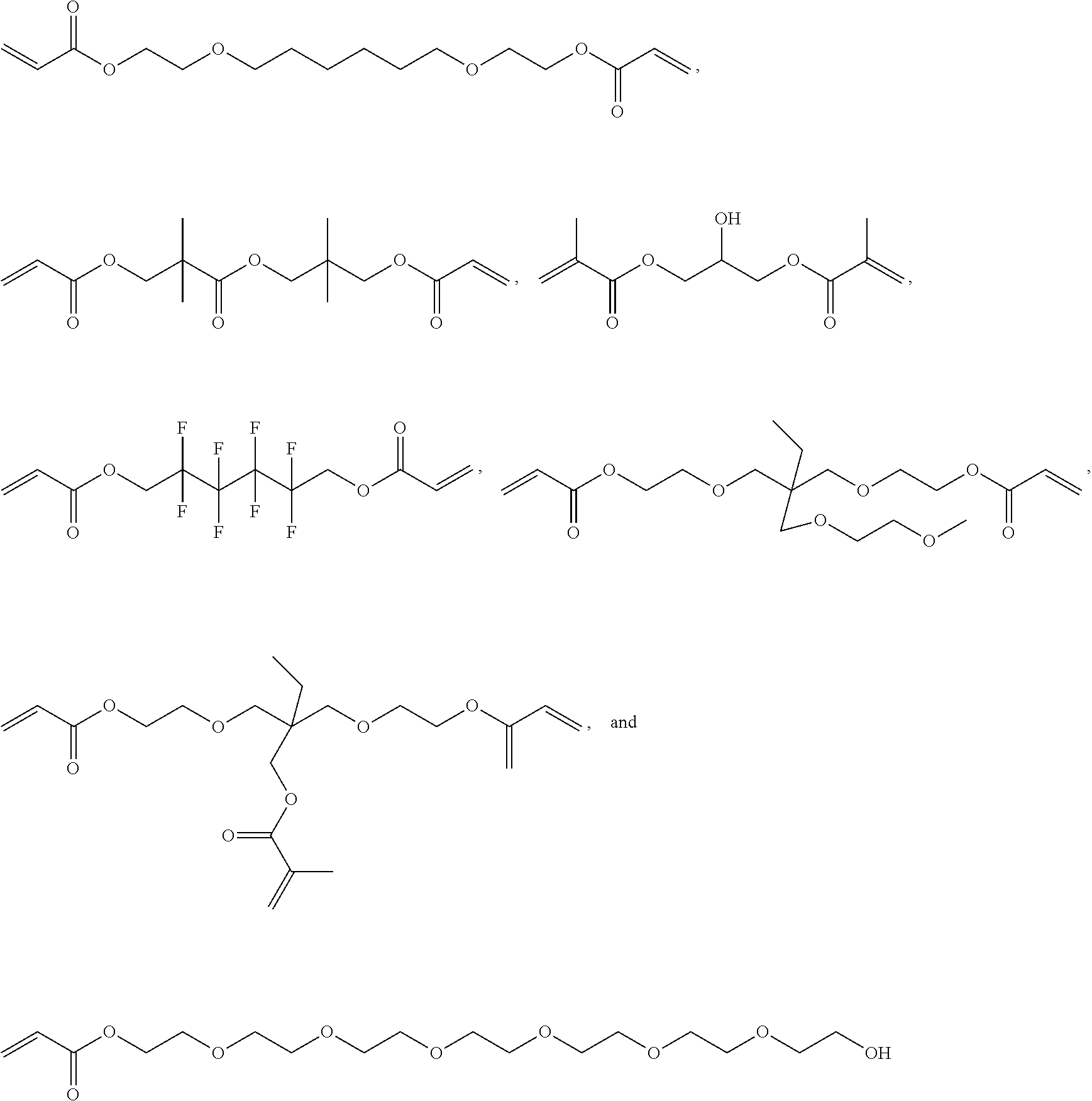Hydrophobic Tissue Adhesives
- Summary
- Abstract
- Description
- Claims
- Application Information
AI Technical Summary
Benefits of technology
Problems solved by technology
Method used
Image
Examples
example 1
Engineered HLAA Tissue Adhesion
[0168]Materials and Methods
[0169]Synthesis of the HLAA
[0170]All chemicals were acquired from Sigma-Aldrich and used as received, unless specified. A poly(glycerol sebacate) (PGS) pre-polymer was prepared through polycondensation of equimolar amounts of glycerol and sebacic acid. The formed pre-polymer, had an approximate weight average molecular weight of 5500 g / mol, determined through gel permeation chromatography (VISCOTEK® TDA 305 with Agilent 1260 pump and autosampler, Malvern Instruments). The pre-polymer was acrylated with acryloyl chloride and purified as described. Different degrees of acrylation (DA) were tested. Prior to use, the HLAA pre-polymer was mixed with the photoinitiator Irgacure 2959 (0.2% w / w) and cured with a spot curing UV light source (OMNICURE® S1000, Lumen Dynamics Group Inc.) equipped with a filter in the range 320 to 390 nm.
[0171]Synthesis of HLAA Derivatives with Variable Polyester Backbones
[0172]All chemicals were acquired...
example 2
Properties of HLAA Derivatives with Variable PGS Backbone
[0198]Materials and Methods
[0199]The performance of acrylated PGDo (PGDoA) and acrylated PGSu (PGSu) (FIG. 8) was evaluated through pull off testing and compared to the results obtained for the acrylated polymer derived from glycerol and sebacic acid (HLAA) as described above.
[0200]Results
[0201]Significant pull off adhesion was achieved for all derivatives, indicating that adhesive hydrophobic polymers can be achieved for different pre-polymer backbone structures, as shown in FIG. 9.
example 3
Properties of HLAA Derivatives with Variable Acrylate Functional Groups
[0202]Materials and Methods
[0203]The performance of PGS acrylated using methacroloyl (“MA”), cynammoyl (“CA”), and crotonoyl (“CinA”) groups, shown in FIG. 10, was evaluated through pull off testing and compared to the results obtained for the acrylated polymer derived from glycerol and sebacic acid (HLAA), using the methods described above.
[0204]Results
[0205]Significant pull off adhesion was achieved for all derivatives, indicating that adhesive hydrophobic polymers can be achieved for acrylate derivatives chemistries, as demonstrated in FIG. 11.
PUM
| Property | Measurement | Unit |
|---|---|---|
| molecular weight | aaaaa | aaaaa |
| viscosity | aaaaa | aaaaa |
| viscosity | aaaaa | aaaaa |
Abstract
Description
Claims
Application Information
 Login to View More
Login to View More - R&D
- Intellectual Property
- Life Sciences
- Materials
- Tech Scout
- Unparalleled Data Quality
- Higher Quality Content
- 60% Fewer Hallucinations
Browse by: Latest US Patents, China's latest patents, Technical Efficacy Thesaurus, Application Domain, Technology Topic, Popular Technical Reports.
© 2025 PatSnap. All rights reserved.Legal|Privacy policy|Modern Slavery Act Transparency Statement|Sitemap|About US| Contact US: help@patsnap.com



